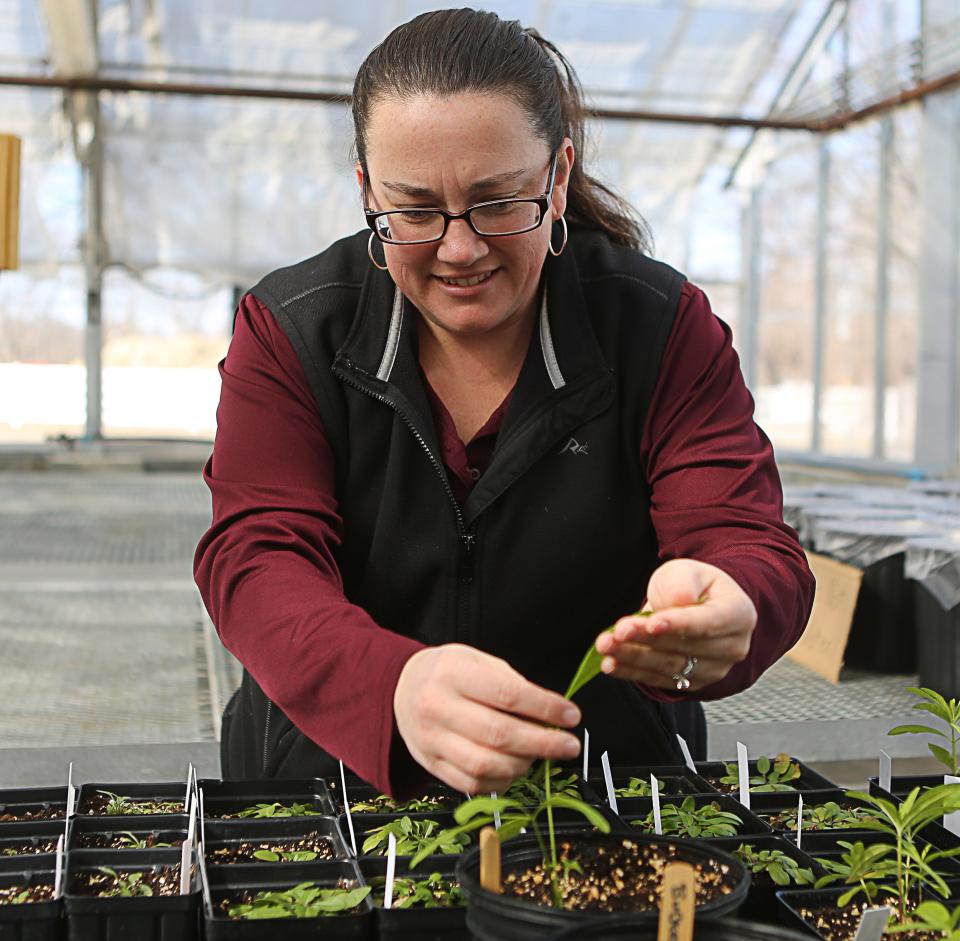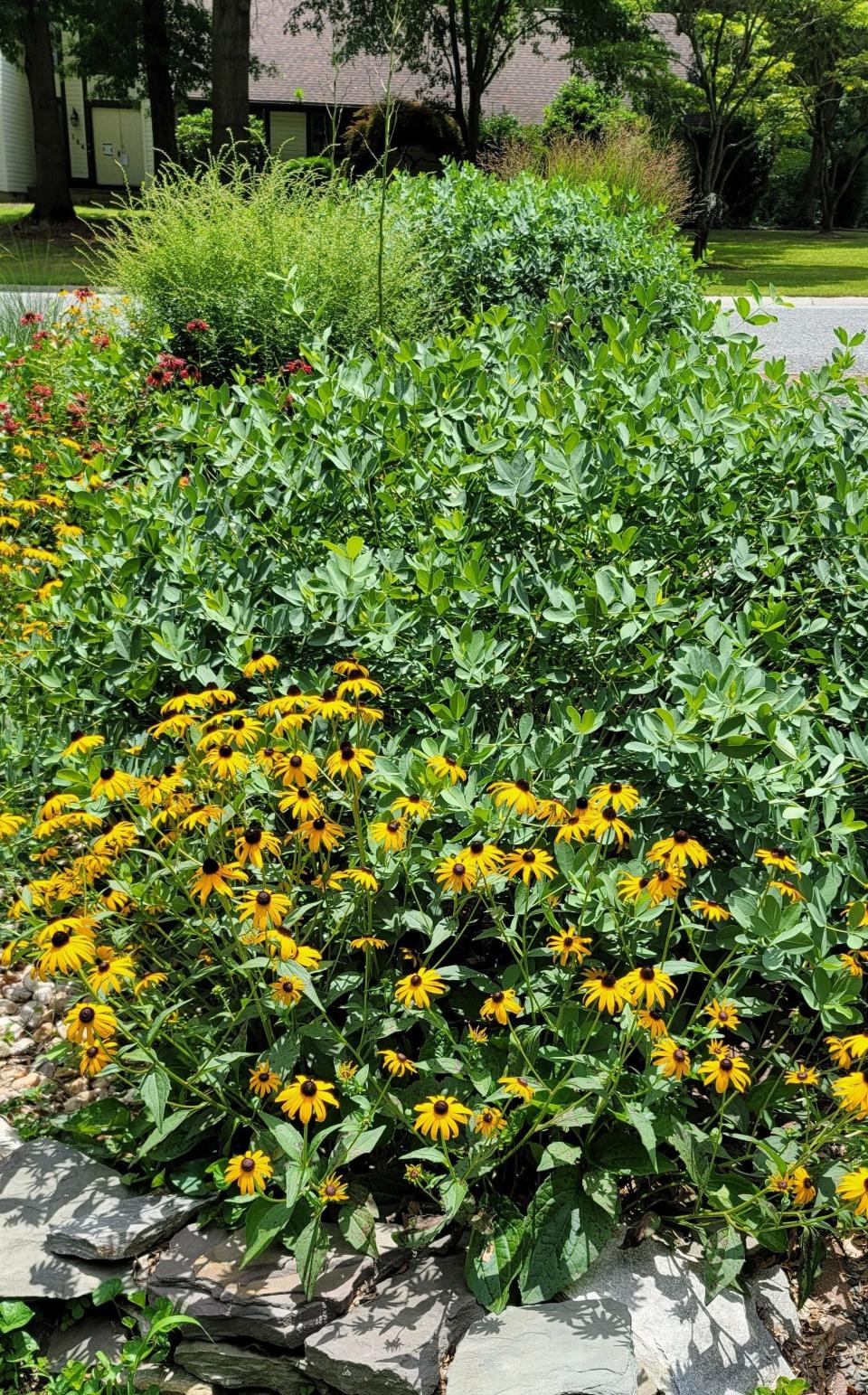Want a sustainable pollinator garden for bees, butterflies, birds? Here's what to do
When it comes to gardens that help pollinators like insects and birds, messy is better.
That means resisting the temptation to clean up because fallen leaves and dried stems provide food and shelter for pollinators that are essential for plants, animals and people.
“Leave the leaves,” said Blake Moore, natural resources extension agent at the University of Delaware Cooperative Extension.
If leaves blow to your neighbor’s yard, put the leaves in a compost bin to give them time to break down into a mulch that won’t blow away.
Since some insects make their home or lay their eggs in plant stems, Moore also recommends leaving 12 to 18 inches of stems when you prune back the garden in fall. New plants will grow up through them.
What to do about weeds, insects in your pollinator garden
People need insects to pollinate plants and provide food for birds, bats, frogs, fish and so on up the food chain.
Avoid using chemicals to control weeds or insects. “Even with organic products you buy, I still recommend reading the label to see the precautions,” Moore said.
That’s because insects eat plants and make homes there, lay eggs on them and in the leaves on the ground. Contaminating those surfaces could interrupt what the insects are trying to do to survive and reproduce. You may also kill beneficial predator insects like the lady bug, lacewing and praying mantis.
That’s one of the topics discussed in books by Doug Tallamy, professor of entomology and wildlife ecology at the University of Delaware. “Plants are not just decorations. They perform essential ecosystems functions,” Tallamy said.
“Insects are the little things that run the world. This war against them is killing us,” he said.
To control weeds in a pollinator garden, plant densely. Native plants should outcompete weeds. It may look more wild, but it’s better than using chemical herbicides.
Dense plantings also provide shelter for little creatures.
A natural mulch like leaf compost also can help control weeds while holding moisture, returning nutrients, loosening the ground so it's not so compact, providing a place for insects to lay eggs and food for worms and burrowing insects.
What plants are best for pollinators?
Use native plants
Native plants are crucial to the pollination process, said Megan Pleasanton, cooperative extension educator at Delaware State University and coordinator of the Master Gardener program in Kent County.
“Native plants are important to the beneficial insects in our ecosystem, providing the food and habitat they depend on,” Pleasanton said.

The cooperative extension offers guides on its website such as “Plants for a Livable Delaware,” , while Master Gardener programs in all three counties offer information on the topic.
Master Gardener program member Kathy Doyle of Dover said she’s “a native plant fanatic” and tries to have a pollinator-friendly yard.
While the "messy'' natural approach doesn’t always sit well with neighbors or homeowners’ associations, if you can hit a happy medium, you’ll be helping nature, Doyle said. Consider planting your pollinator garden in the backyard.
Doyle tries to create an attractive pollinator garden neighbors will see, hoping to inspire them to spread the word.

Pollinator beds feature a variety of colors and shapes through the seasons and attract bees, butterflies and birds. But because they draw bees, don't plant them near your front door or sidewalk.
In the middle of the growing season, Doyle trims most of her plants back by about a third, resulting in bushier growth not as susceptible to flopping over.
In the fall, she tries to leave many dried plants for insects and animals who depend on them while also creating visual interest, especially during and after a light snow.
Flowers throughout the seasons
In planning, consider what blossoms when.
“The most important thing to think about is flowering times,” Moore said, to provide food for pollinators from spring to fall.
Early flowering plants include trees like serviceberry and eastern red bud, forbs like Golden Alexander and perennial early shrubs. During summer, native milkweed varieties work well. Fall bloomers include asters and goldenrod.
Doyle recommends native ground covers like foamflower that are low maintenance and spread over time.
Provide food for birds
While flower nectar and pollen are good for bees and butterflies, a pollinator garden also provides seeds and berries for birds.
“Winterberry holly creates an abundance of berries that are pleasing aesthetically and provide food for birds,” said Moore. Elderberry and inkberry holly do, as well.
For seeds, try native grasses like switchgrass and little blue stem or plants like ox eye sunflowers or coneflowers, often called echinacea.
Use a variety of flower shapes and plant stems
Since different insects have different tongues, for long-tongue insects try milkweed and wild bergamot, and for short-tongue insects plant sunflowers.
Plants with pithy stems like Joe Pye weed are easy for insects to burrow into for homes, while other insects prefer woody stems found in shrubs like rhus sumac.
Consider light, soil and water needs
“Most of the plants we’ve talked about do well in sun or partial sun, but if you need plants for a more shady spot, use ones you might find in the woods like golden ragwort,” Moore said.
For an area with moist soil, try swamp milkweed or New York ironweed.
The cooperative extension offers soil testing for a small fee to find out what plants will grow best or what nutrients to add. See the cooperative extension’s website at www.udel.edu/canr/cooperative-extension/bsite for details.
If you don’t want to bother with that, Moore says add natural compost like leaf compost to soil.
A water feature such as a bird bath or small fountain can also attract birds and insects.
Reach reporter Ben Mace at [email protected].
This article originally appeared on Delaware News Journal: Natural garden with native plants best to attract bees, butterflies
